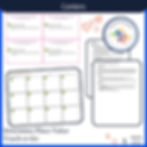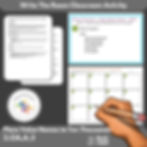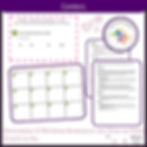This article is an insightful and comprehensive guide for educators in addressing the challenges faced by special education students who exhibit task avoidance behaviors. By exploring the root causes and types of task avoidance, this article provides practical strategies and individualized education program (IEP) goals to help students overcome these obstacles and achieve success in the classroom. Readers can expect to learn about various task avoidance behaviors, practical strategies to address them, and examples of IEP goals tailored to support students' unique needs and abilities. This article is a valuable resource for educators seeking to create a positive and supportive learning environment for their special education students.
Do you need help with students who avoid tasks or have difficulty completing their tasks and assignments? You are not alone, task avoidance is a common behavior among special education students, for example, but it doesn't have to be a barrier to their success. In this article, we'll explore five types of task avoidance behaviors and provide strategies and individualized education program (IEP) goals to help get all your tasks and students back on track.

Understanding Task Avoidance
Definition and Causes of Task Avoidance
It's no secret that Special education students often face challenges in the classroom that can make it difficult to complete assignments. As a result, they may resort to task avoidance. Task avoidance is a behavior where students find ways to avoid or delay working on an assignment. This can be a significant obstacle for students and leads to incomplete assignments, low grades, and a lack of progress in the classroom. So what do we do about it? How do we identify it?
Strategies for Addressing Task Avoidance
As a teacher, it's important to understand the different types of task avoidance behaviors that students may display. This can help you identify the root causes of the behavior and develop effective strategies to address it. Here are five common types and strategies to help your students overcome them.
Refusal to start the assignment
Strategy: Break the assignment into smaller steps and support each step. Implementation: For a writing assignment, divide and break the task into sections such as brainstorming, outlining, drafting, editing, and finalizing. Provide guidance and write check-ins to do list at each stage, ensuring the student understands the expectations and feels supported.
Procrastination
Strategy: Use a timer to help the student stay on task and provide incentives frequent breaks or reward for completing each step of complete the assignment. Implementation: Introduce a visual timer (such as a sand timer or digital timer) to help the student stay focused on the task. Set specific time intervals for each segment of the assignment, and provide small rewards or breaks upon completion of each step.
Working slowly
Strategy: Use the example of a timer to help the student stay on task and provide positive feedback for their progress. Implementation: Monitor the student's progress at regular intervals, offering encouragement and constructive feedback. When the student completes a step within the assigned time frame, praise the child for their effort and reinforce the child the importance of staying on track.
Distraction
Strategy: Provide a quiet, distraction-free environment for the student to complete their work in. Implementation: Designate a specific area in the classroom where the student can work independently, away from distractions. Provide noise-canceling headphones, if necessary, and ensure that materials and tools are readily available.
Giving up
Strategy: Break the assignment into smaller, manageable steps and provide positive feedback on their progress. Implementation: Recognize the student's effort and progress at each stage of the assignment. Offer words of encouragement and remind them of their capabilities. Help them break down complex tasks into smaller, achievable steps, and celebrate their accomplishments along the way.
Next we will look at what behaviors we want to improve and form a plan.
Goal: Increase the student's focus and motivation to do specific tasks and complete assignments.
Strategy: Provide incentives or reward for completing assignments or tasks, such as alternative credit or preferred activities.
Goal: Improve the student's time management skills.
Strategy: Teach the next school student how to use a timer or schedule to manage their time effectively.
Goal: Enhance the student's organizational skills.
Strategy: Support the student in developing a system for organizing their assignments and materials.
Goal: Reduce the student's feelings of fear and anxiety related to writing and completing assignments.
Strategy: Provide support for the student to develop coping
Developing Appropriate Goals
In addition to these strategies, it's important to incorporate individualized education program (IEP) goals to address task avoidance behavior. IEP goals are specific, measurable, and achievable objectives that are designed to help special education students succeed in the classroom.
Examples of Effective IEP Goals
Here are some examples of IEP goals that could help address task avoidance:
By (date), when given a task to complete in class, the student will independently begin it within 5 minutes of receiving it, without asking for assistance or avoiding it, for 8 out of 10 opportunities in ten consecutive trials.
By (date), the student will demonstrate improved time management skills by completing assignments within the designated time frame for 8 out of 10 opportunities in ten consecutive trials.
By (date), the student will demonstrate improved attention and focus by staying on task for at least 10 minutes during independent work activities, without distraction or avoidance behavior, for 8 out of 10 opportunities in ten consecutive trials.
By (date), the student will demonstrate improved self-motivation by completing tasks without prompting or incentives for 8 out of 10 opportunities in ten consecutive trials.
By (date), the student will demonstrate improved problem-solving skills by independently identifying and resolving challenges during task completion for 8 out of 10 opportunities in ten consecutive trials.
By (date), the student will demonstrate improved organizational skills by independently maintaining an organized work space and materials for 8 out of 10 opportunities in ten consecutive trials.
By (date), the student will demonstrate improved self-advocacy skills by seeking assistance or accommodations to complete tasks for 8 out of 10 opportunities in ten consecutive trials.
By (date), the student will demonstrate improved confidence and resilience by persisting in task completion, even when faced with difficulty or setbacks, for 8 out of 10 opportunities in ten consecutive trials.
By (date), the student will demonstrate improved communication skills by expressing their needs and concerns related to task completion to teachers or support staff for 8 out of 10 opportunities in ten consecutive trials.
These are just a few examples, and the specific goals should be tailored to each student's needs and abilities. The goals should be specific, measurable, achievable, relevant, time-bound, regularly monitored, and updated as necessary.
Involving Parents and Guardians in Addressing Task Avoidance Behaviors
Parents and guardians play a crucial role in supporting their child's education and addressing task avoidance behaviors. Involving them in the process can provide valuable insights, support for teachers, and help ensure that strategies are consistent across different environments. Here are some ways to involve parents and guardians in addressing task avoidance behaviors:
Open Communication: Establish and maintain open lines of communication with parents and guardians. Regularly update them on their child's progress, share concerns about task avoidance, and discuss strategies being implemented in the classroom. Encourage parents to share their own observations and insights about their child's behavior at home.
Collaboration: Collaborate with parents and guardians in developing and implementing IEP goals and strategies to address task avoidance behaviors. This can include discussing specific accommodations, modifications, or interventions that may be helpful for their child. Ensure that parents are aware of the expectations and the support their child needs to succeed.
Consistency: Encourage parents and guardians to consistently approach task avoidance behaviors across different environments. This can include implementing similar strategies at home, reinforcing expectations, and using the same language and techniques as the school to provide a unified support system for the student.
Parent Education: Offer resources and training for parents and guardians on task avoidance behaviors, appropriate coping strategies, self-regulation skills, and other relevant topics. This can help them better understand their child's needs and equip them with the tools to support their child's success.
Support Groups: Connect parents and guardians with support groups or other resources that can offer additional guidance, share experiences, and provide a network of support for families dealing with task avoidance behaviors.
Regular Meetings: Schedule regular meetings with parents and guardians to discuss their child's progress, review the effectiveness of the strategies being implemented, and make any necessary adjustments. This ongoing collaboration can ensure that the student receives the support they need to overcome task avoidance behaviors and succeed in the classroom.
Teachers can create a strong support system for students that extends beyond the classroom by involving parents and guardians in addressing task avoidance behaviors. This collaborative approach can lead to more effective interventions and a greater likelihood of success in overcoming task avoidance behaviors, ultimately promoting the academic and personal growth of the student.
We hope these strategies and IEP goals will help you support your special education students in overcoming task avoidance behaviors and achieving their goals. Every student is unique, so it's important to tailor these strategies to their needs and abilities. Check out our lesson plan pages if you're looking for more resources to support your students. You'll find a wealth of information, tips, and activities to help your students succeed and achieve their IEP goals. Together, we can make a positive difference in the lives of our special education students.
































